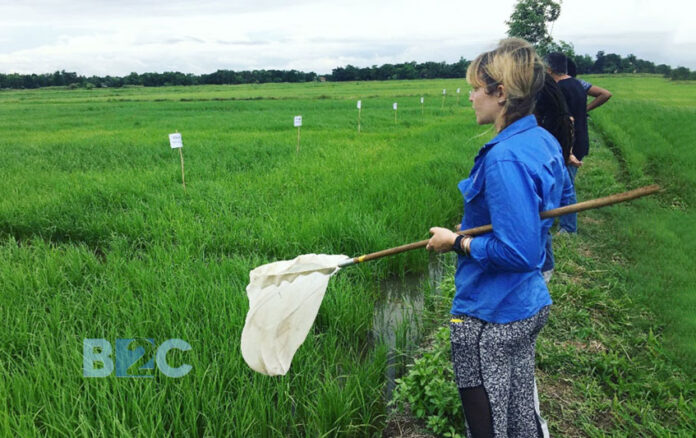Are you tired of dealing with harmful pesticides and their negative effects? If so, sustainable pest management is the solution for you.
In this article, we will explore the origin and purpose of sustainable pest management practices. We will also discuss the efforts made by agencies to transition away from high-risk pesticides.
By targeting specific pests and promoting sustainability, this approach offers a new way to protect both humans and the environment.
Take a step towards a healthier future with sustainable pest management.
Progress in Sustainable Pest Management
Sustainable pest management has made significant progress in recent decades, transitioning to safer and more environmentally friendly practices. In California, the Sustainable Pest Management (SPM) Work Group was launched by the California Department of Pesticide Regulation (DPR), California Environmental Protection Agency (CalEPA), and California Department of Food and Agriculture (CDFA).
This group consists of thirty-three leaders representing diverse interests and aims to align on a pathway to minimize reliance on toxic pesticides. The focus of the SPM Work Group is on both agriculture and urban issues, to promote solutions that protect health and safety, are economically viable, and eliminate disparities in pest management practices.
The group has identified leverage points such as updating pest prevention systems, improving pesticide registration and evaluation, and strengthening leadership structures to advance sustainable pest management in both agricultural and urban settings.
The Role of the Sustainable Pest Management Work Group
The role of the Sustainable Pest Management Work Group is to provide leadership and guidance in aligning diverse interests towards minimizing reliance on toxic pesticides and promoting safe and sustainable pest management practices in both agricultural and urban settings.
This working group consists of thirty-three leaders representing a range of interests and is dedicated to developing a pathway to reduce the use of hazardous pesticides. The group focuses on promoting solutions that protect health and safety, are economically and agronomically viable, and eliminate disparities in pest management practices.
The work group engages, educates, and promotes collaboration to ensure safe and sustainable pest management practices are implemented in agriculture and urban areas. The group’s efforts include updating pest prevention systems, improving pesticide registration and evaluation processes, and strengthening leadership structures to advance sustainable pest management practices in California.
Urban Pest Management and Its Challenges
To effectively address urban pest management challenges, you need to understand the significant impact of pesticides in urban settings. In nonagricultural areas, pesticide sales account for 35-55% of overall pesticide sales and reported pesticide use in these areas accounts for 16-19% of total use. Furthermore, a staggering 65-75% of reported pesticide-related illnesses occur in nonagricultural settings.
Recognizing the urgency of the situation, the California Department of Pesticide Regulation (DPR) has invited nine leaders to develop guidance on urban sustainable pest management. The recommendations include enhancing data collection, advancing research and outreach, making sustainable pest management the preferred choice for users, and refocusing urban design and regulations.
Priority Pesticides and Leverage Points for Change
You can identify priority pesticides and leverage points for change in sustainable pest management.
The Sustainable Pest Management (SPM) Work Group and Urban Subgroup have proposed key actions and leverage points to address the use of high-risk pesticides and promote safer, sustainable pest control practices.
These leverage points include updating pest prevention systems, improving pesticide registration and evaluation, and strengthening leadership structures.
For agricultural SPM, the focus is on enhancing knowledge, aligning pest control advisors with SPM, reducing economic risk for growers transitioning to SPM, and activating markets.
For urban SPM, the leverage points include enhancing data collection, advancing research and outreach, making SPM the preferred choice for users, and refocusing urban design and regulations.
These priority pesticides and leverage points are crucial in driving the transition toward sustainable pest management practices.
Natural and Integrated Approaches to Pest Control
When transitioning from priority pesticides to sustainable pest management practices, it’s important to consider natural and integrated approaches to pest control. These approaches focus on environmentally friendly methods that minimize harm to humans and the ecosystem.
Ecological Pest Management (EPM) promotes the use of beneficial insects, such as ladybugs and nematodes, to combat harmful pests. Integrated Pest Management (IPM) strategies involve regular inspections, monitoring, and record-keeping of pests, as well as non-chemical methods like home repairs and deep cleaning.
Additionally, natural forms of pest control, such as using ducks to eat garden pests and parasitic wasps to control populations of arthropods, are effective and sustainable options.
Conclusion
Congratulations! By implementing sustainable pest management practices, you have entered a world where harmful pesticides are a thing of the past. Like a delicate web spun by a skilled spider, this approach targets specific pests while promoting sustainability, creating a harmonious environment for all.
The efforts of the California Department of Pesticide Regulation and other agencies have paved the way for a healthier future.
So, let’s embrace natural and integrated approaches to pest control, ensuring a thriving ecosystem for generations to come.
